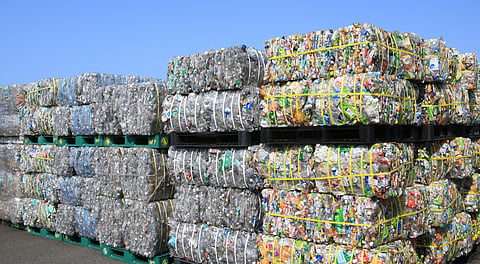Plastic pollution treaty should embrace circular economy education
The Intergovernmental Negotiating Committee (INC5) negotiations held in South Korea’s Busan late last year mark a turning point in global efforts to tackle plastic pollution. They aimed to finalise the draft of a legally binding treaty on plastic pollution, addressing the issue comprehensively for the first time. INC5 had a mandate encompassing the full lifecycle of plastics — including product design and environmentally sound waste management. This reflects an ambitious commitment to tackle the root causes of plastic pollution while simultaneously fostering more sustainable production and consumption systems.
While the talks failed to bring about a consensus, there is a lot that can still be done. Embedding education for the circular economy into the treaty could equip individuals, institutions, and governments with the tools to rethink, redesign, and reshape the global plastic economy. This is not merely about solving a waste problem; it is about reimagining how we live, consume, and realize a sustainable and plastic pollution-free future for people and the planet.
With only 9 per cent of the world’s plastic waste ever recycled, reliance on this method alone is insufficient to combat the growing plastic pollution crisis even though it is a most efficient way. The previous round of INC meetings offered a pivotal moment to shift focus towards a transformative plastic economy that addresses the lifecycle of plastics holistically, from design to disposal. The negotiations in Busan highlighted a significant divide between countries advocating for ambitious upstream measures and those focusing on downstream measures. Key issues discussed included global bans on certain kinds of plastic products and their chemicals, measures to reduce plastic production and financial mechanisms.
One critical step forward if we are to achieve a plastic pollution-free future lies in embedding circular design principles into the plastic life cycle. By simplifying material complexity, fostering the adoption of biodegradable alternatives, and ensuring modular designs that facilitate reuse and repair, plastic products can remain in circulation longer and reduce waste streams. Equally important is tackling plastic pollution by educating all relevant stakeholders, including producers, importers, consumers, users, recyclers, and promoting their shared responsibility to end plastic pollution jointly.
The intersection of plastic pollution and climate change further underscores the urgency of action. Plastic production and plastic waste disposal contribute to about 3.4 per cent of global greenhouse gas emissions. Promoting sustainable consumption and production, scaling sustainable alternatives, and aligning plastic management strategies with national climate goals, such as Nationally Determined Contributions (NDCs), could significantly mitigate these emissions while fostering a low-carbon economy.
A critical component of this transformation is embedding education for the circular economy into the treaty’s vision, to ensure that people, institutions, and governments worldwide have the skills and knowledge to adopt sustainable practices. Integrating circular economy education into formal and informal learning systems is critical for sustainable transitions. Such education focuses on fostering skills for designing, producing, and consuming within the limits of planetary boundaries. For example, youth education programmes can encourage behavioural shifts towards rejecting unnecessary plastic products, embracing sustainable consumption, and understanding the environmental impacts of single-use items. Public awareness-raising can improve understanding, share information on the effects of plastic pollution and promote public participation.
Moreover, education for the industry itself can help to bridge the gap between emerging technologies and their equitable implementation. Innovations such as AI-powered waste tracking, chemical recycling, and blockchain transparency tools hold immense promise for improving plastic waste management. Yet these innovations must be deployed equitably to avoid widening technological disparities between nations. The new treaty could represent a landmark opportunity to move beyond the traditional linear framework of production and disposal, fostering global cooperation for a sustainable and inclusive plastic economy.
The new treaty has the potential to redefine humanity’s relationship with plastics. Beyond addressing waste, it must embrace education as a cornerstone of systemic change. In the upcoming round of talks expected in 2025, there should be emphasis on integrating education for the circular economy. This approach would ensure that the treaty not only addresses the technical and regulatory aspects of plastic pollution but also invests in equipping individuals, institutions, and communities with the knowledge and tools needed to sustain long-term change. A well-educated global population adopting circular economy principles is essential to drive innovative solutions, rethink consumer behaviors, and enable cross-sector collaboration.
Anupam Khajuria is a research fellow and academic associate at the United Nations University Institute for the Advanced Study of Sustainability (UNU-IAS), Tokyo, Japan, and Nana Zhao works with the Basel Convention Regional Center for Asia and the Pacific, Beijing, China.
Views expressed are the authors’ own and don’t necessarily reflect those of Down To Earth

